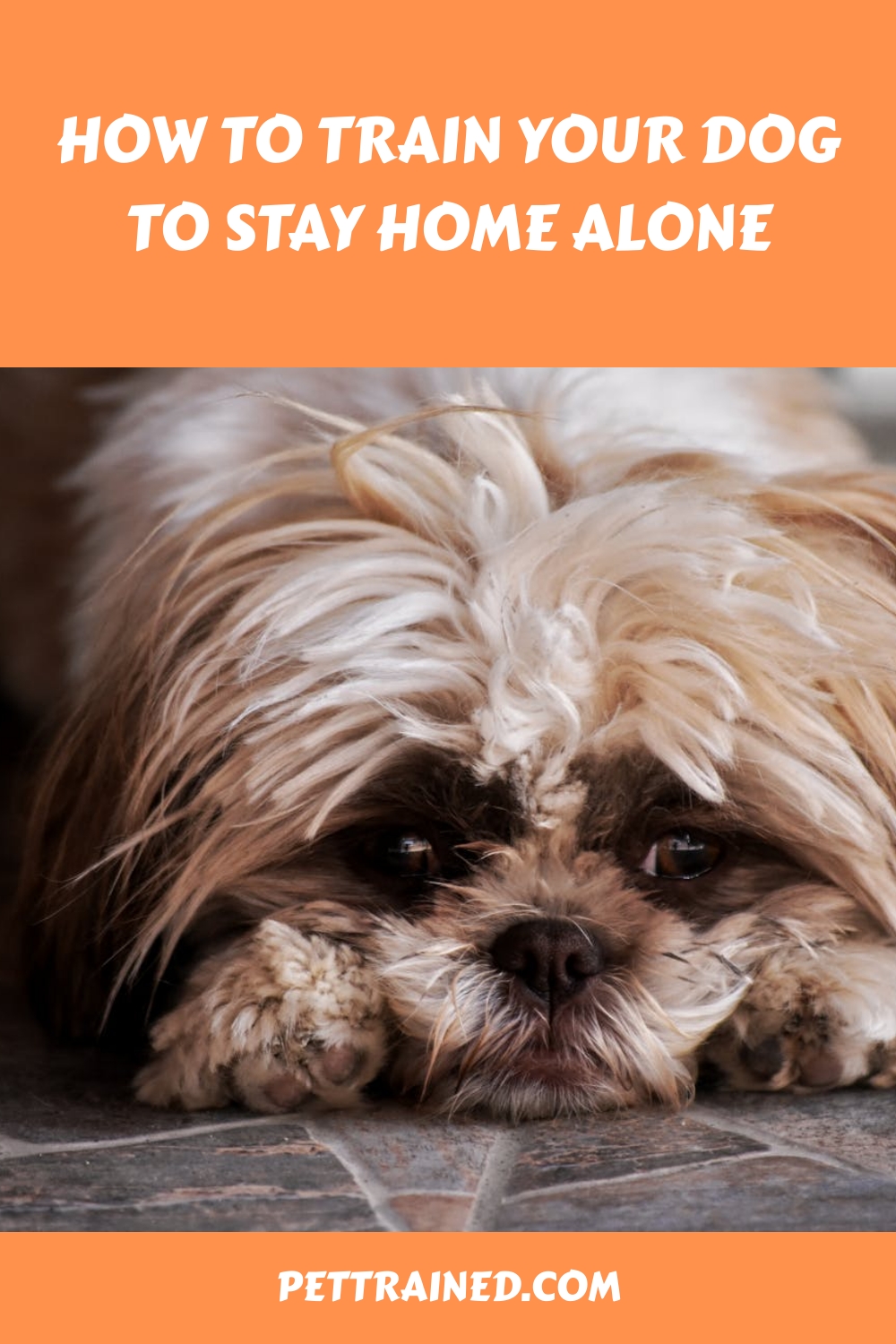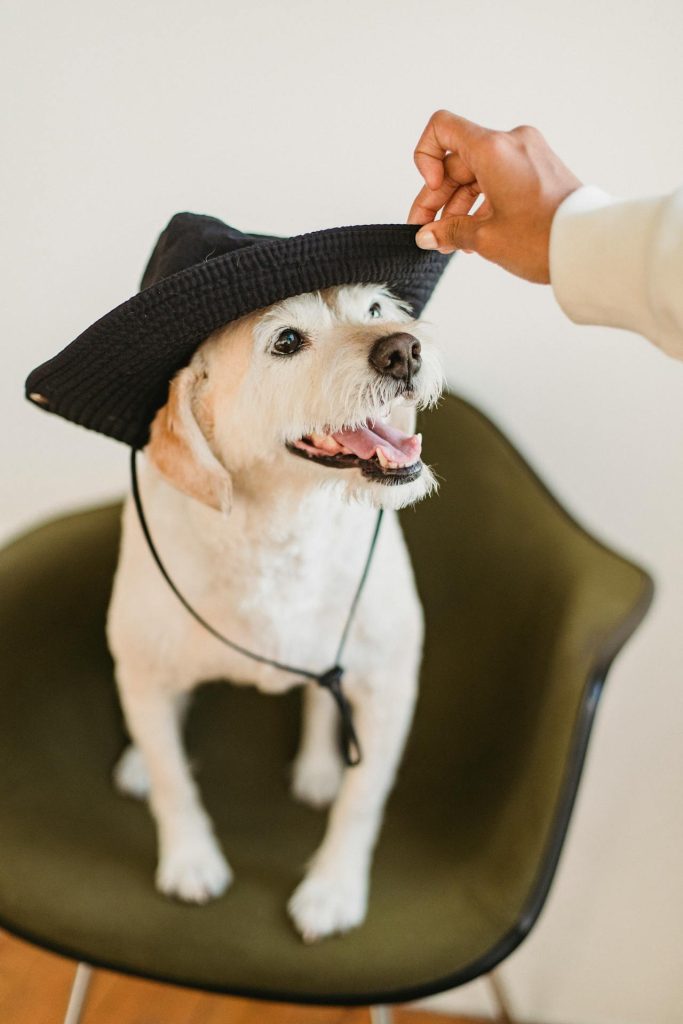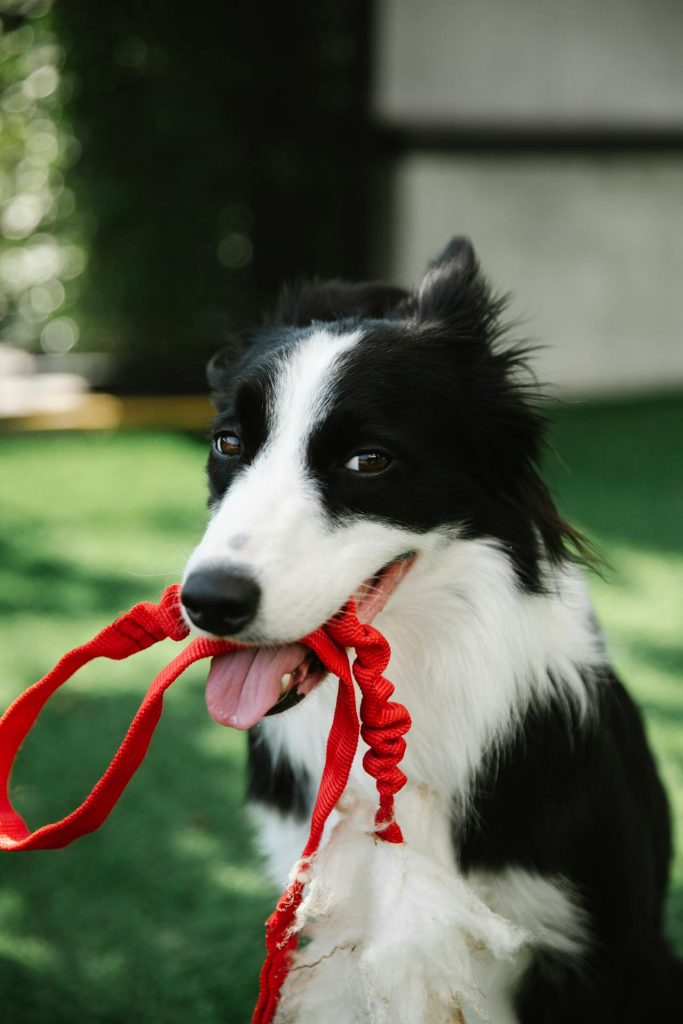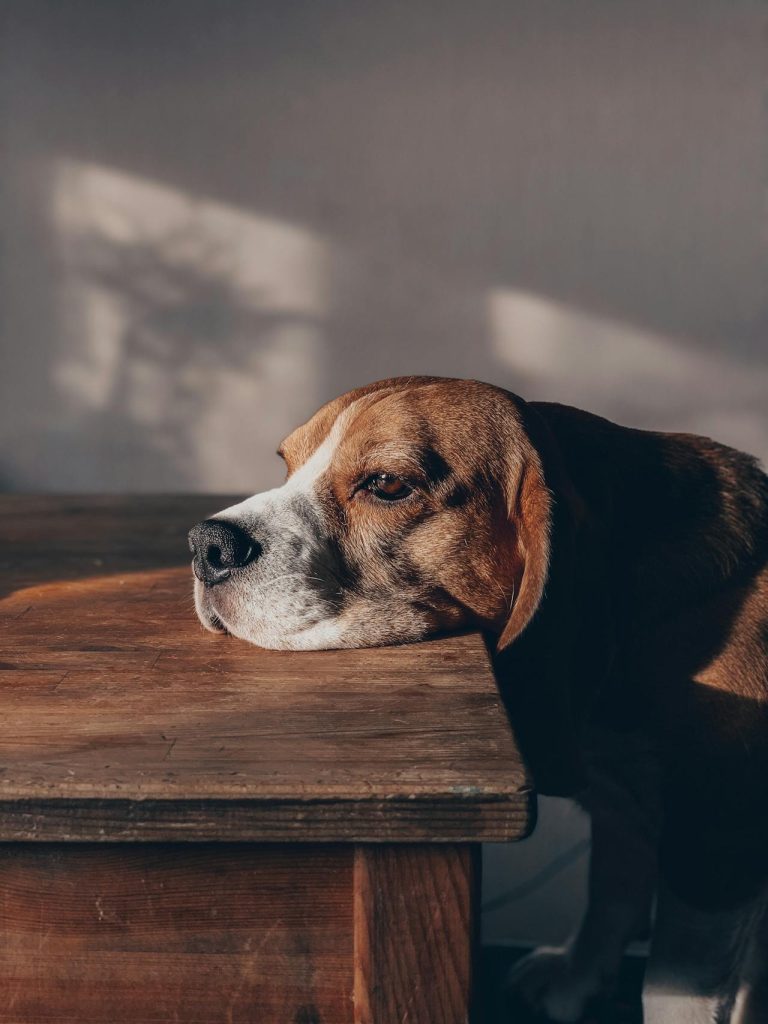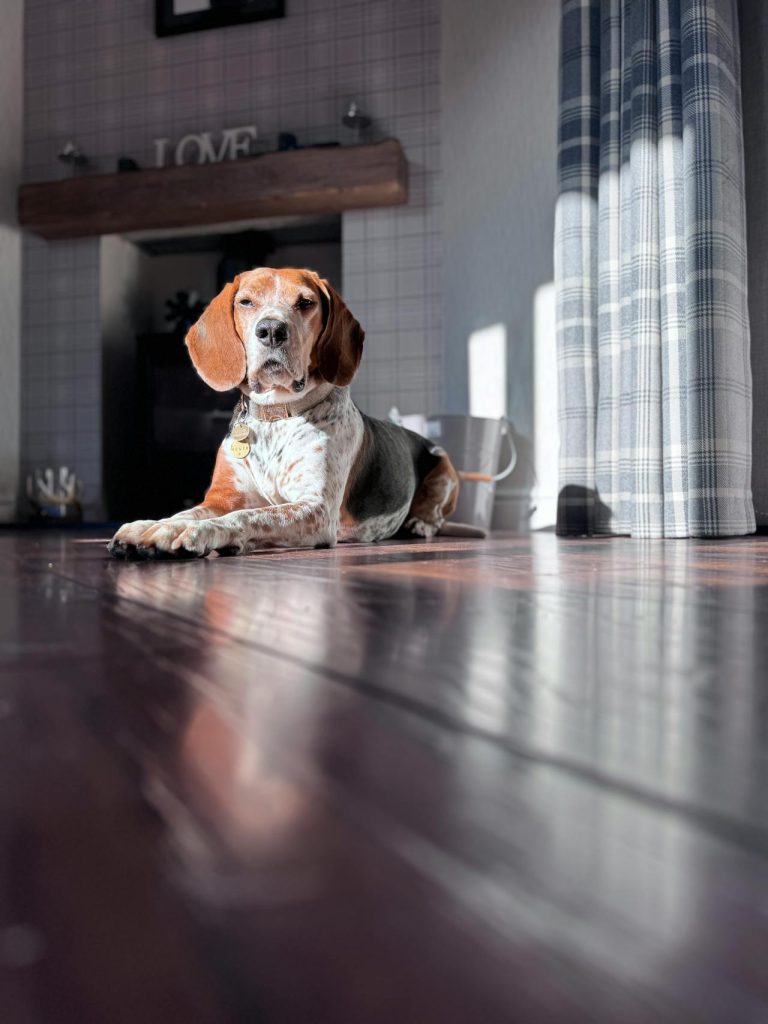
To train your dog to stay home alone, start by establishing a consistent routine that includes exercise, mental stimulation, and positive reinforcement training. Ascertain your dog’s basic needs are met, and use crating techniques to provide a sense of security. Manage anxiety triggers, and gradually introduce alone time, beginning with short sessions. Reward calm behavior and increase alone time as your dog becomes more comfortable. You’ll need to tailor your approach to your dog’s unique needs, and with the right strategy, you can help your dog feel confident and calm when left home alone, and a clear plan will begin to emerge.
Table of Contents
Key Takeaways
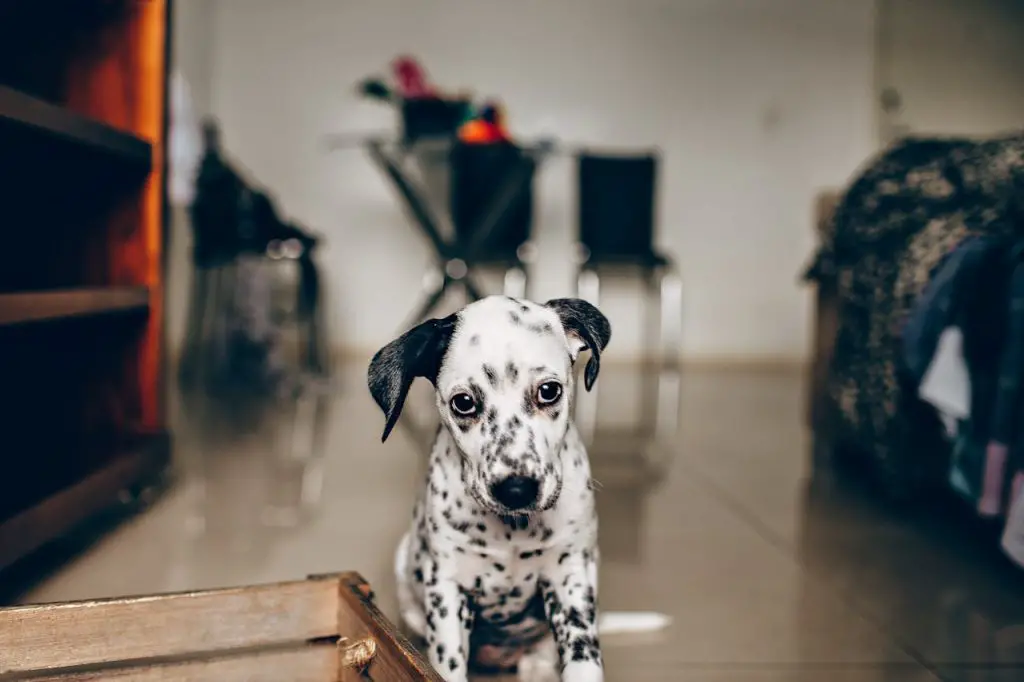
- Establish a consistent daily routine that includes training, exercise, and relaxation to help your dog feel secure and calm when left alone.
- Gradually introduce alone time, starting with short sessions of 5-10 minutes, and reward calm behavior to build positive associations.
- Use positive reinforcement techniques, such as treats and praise, to encourage desired behaviors and reduce anxiety.
- Provide mental stimulation through interactive toys and puzzle games to reduce boredom and stress when left alone.
Prepare Your Dog for Training
Before you start training, you’ll want to guarantee your dog’s basic needs are met and they’re in a calm, receptive state, with a full stomach, ample exercise, and a relaxed demeanor.
This will help assure that your dog is focused and ready to learn.
You’ll also want to identify and manage any anxiety triggers that might impede the training process.
For example, if your dog gets anxious when left alone, you may need to start with short training sessions and gradually increase the duration.
This post contains affiliate links. However all the information provided on this site are my own honest opinions. See more in Disclaimer.
Crating techniques can be an effective way to help your dog feel secure and calm, but it’s crucial to use them judiciously.

Crating should be a positive experience for your dog, not a punishment.
Introduce the crate gradually, starting with short periods and rewarding calm behavior.
You can also add familiar items like blankets or toys to make the crate feel more like a safe haven.
Establish a Consistent Routine
Now that you’ve prepared your dog for training, it’s time to create a schedule that promotes learning and reinforces good habits.
Establishing a consistent routine is the next step in setting your dog up for success.
By creating a daily routine that includes regular times for training, exercise, and relaxation, you’ll help your dog feel more secure and develop a sense of trust in you.
As you establish your routine, be sure to incorporate reward systems to encourage good behavior.
Positive reinforcement, such as treats and praise, can go a long way in helping your dog associate desired behavior with a pleasant outcome.
You should also use consistent behavior cues, such as specific commands and hand signals, to communicate clearly with your dog.
Consistency is key, so make sure to stick to your routine even on weekends and days off. By doing so, you’ll help your dog learn faster and more efficiently.
With a consistent routine, you’ll be setting the stage for successful training and a stronger bond between you and your dog.
Provide Mental Stimulation
Providing mental stimulation is an essential component of your dog’s overall well-being, and by challenging your dog’s mind, you’ll help prevent boredom, stress, and destructive behavior.
Interactive toys and puzzle games are excellent ways to engage your dog’s brain and keep them entertained while you’re away.
These activities will not only reduce the likelihood of separation anxiety but also provide cognitive benefits.
| Mental Stimulation Activity | Benefits | Tips |
|---|---|---|
| Interactive Toys | Reduces boredom and stress, promotes problem-solving | Fill toys with treats or kibble to increase engagement |
| Puzzle Games | Challenging and stimulating, reduces destructive behavior | Gradually increase difficulty level as your dog becomes more confident |
| Hide-and-Seek | Encourages problem-solving and rewards calm behavior | Start with short sessions and increase duration as your dog becomes more proficient |
Exercise Before Leaving Home
As you prepare to leave your home, it’s crucial to provide your dog with pre-departure physical activity to help them relax and reduce separation anxiety.
By exercising your dog before leaving, you’ll not only tire them out but also give them a sense of fulfillment, making it easier for them to calm down when you’re away.
Regular exercise before leaving home can make a significant difference in your dog’s behavior, so let’s explore the best ways to make it a part of your daily routine.
Pre-Departure Physical Activity
Your dog’s pre-departure physical activity plays an essential role in reducing separation anxiety and destructive behavior when you leave the house.
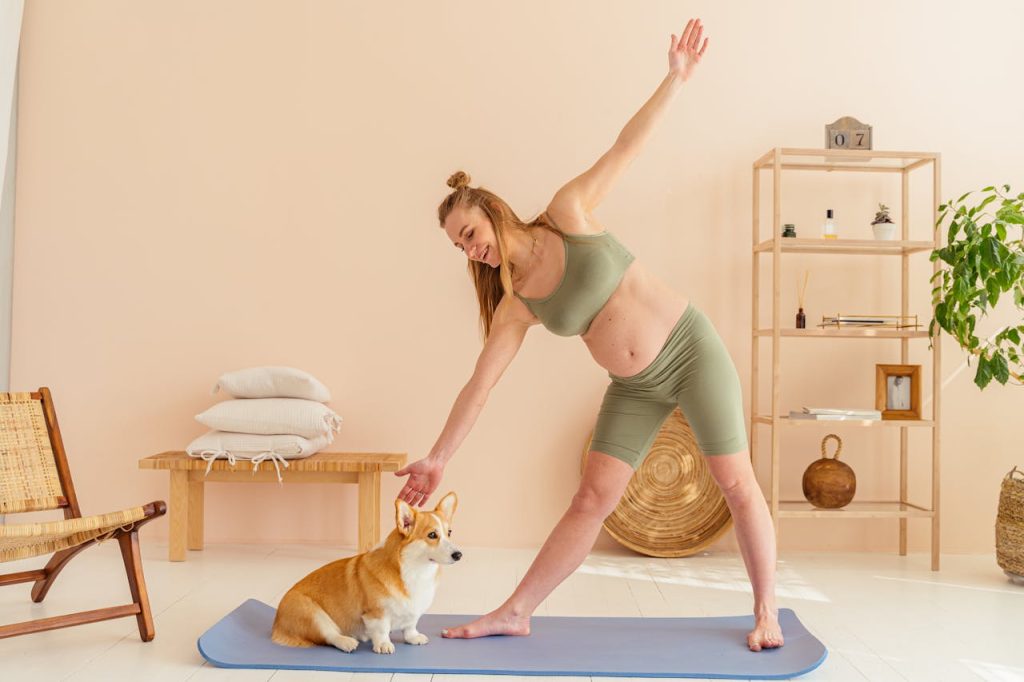
By engaging your dog in some form of exercise before leaving, you’ll help them release pent-up energy, making it easier for them to relax while you’re away.
This pre-departure playtime can be as simple as a 10-15 minute walk or some playtime in the backyard. The goal is to get your dog’s heart rate up and tire them out a bit.
As you incorporate pre-departure physical activity into your daily routine, you’ll notice a significant decrease in your dog’s stress levels when you leave the house.
They’ll be more relaxed and calm, reducing the likelihood of destructive behavior.
This energy release is essential for dogs who suffer from separation anxiety, as it helps to calm their nerves and reduce anxiety.
By making pre-departure physical activity a priority, you’ll be taking a proactive step in helping your dog feel more comfortable and secure when you’re not around.
Reduce Separation Anxiety
Building on the benefits of pre-departure physical activity, exercising your dog before leaving home can greatly reduce separation anxiety by distracting them from your departure and providing a mental and physical outlet for their stress.
As you get ready to leave, your dog will likely pick up on anxiety triggers such as grabbing your keys or putting on your coat.
Exercise can redirect their attention away from these triggers and calm their nerves.
Regular physical activity can also improve your dog’s overall mood and reduce stress levels, making them more resilient to separation anxiety.
Trending in Dogs:
By incorporating exercise into your pre-departure routine, you can help your dog feel more relaxed and calm when you leave the house.
This, in turn, can lead to improved dog behavior and a reduced likelihood of destructive or anxious behavior while you’re away.
By taking the time to exercise your dog before leaving home, you can set them up for success and help them feel more comfortable when left alone.
Tire Them Out
Take your dog on a vigorous 30-minute walk or engage them in a high-energy play session at least an hour before leaving home to tire them out and reduce the likelihood of separation anxiety.
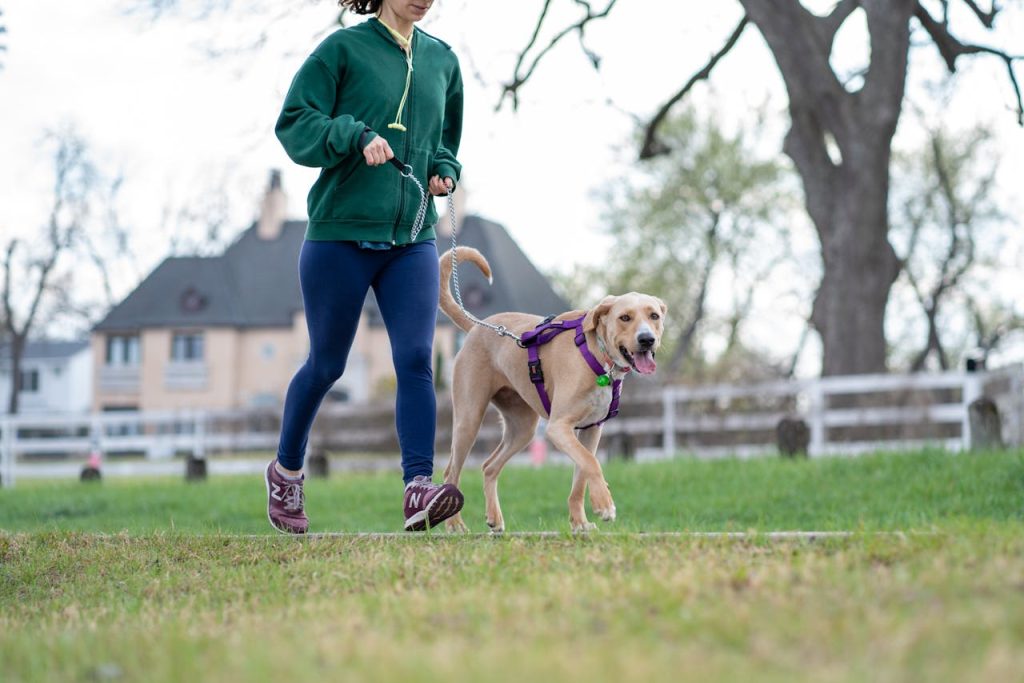
You know your dog’s energy levels and limitations, so adjust the duration and intensity accordingly.
Some high-energy dog breeds, like Border Collies or Australian Shepherds, might require more exercise than others, like Bulldogs or Pugs.
Implementing training methods like positive reinforcement and reward-based training will also help to mentally stimulate your dog and reduce stress.
As you exercise your dog, you’ll notice their physical and mental exhaustion, making it easier for them to relax when you leave the house.
You’ll be amazed at how a simple walk or play session can make a huge difference in your dog’s behavior.
By incorporating regular exercise into your dog’s routine, you’ll set them up for success when it’s time to stay home alone.
With consistency and patience, your dog will learn to calmly wait for your return.
Use Positive Reinforcement Techniques
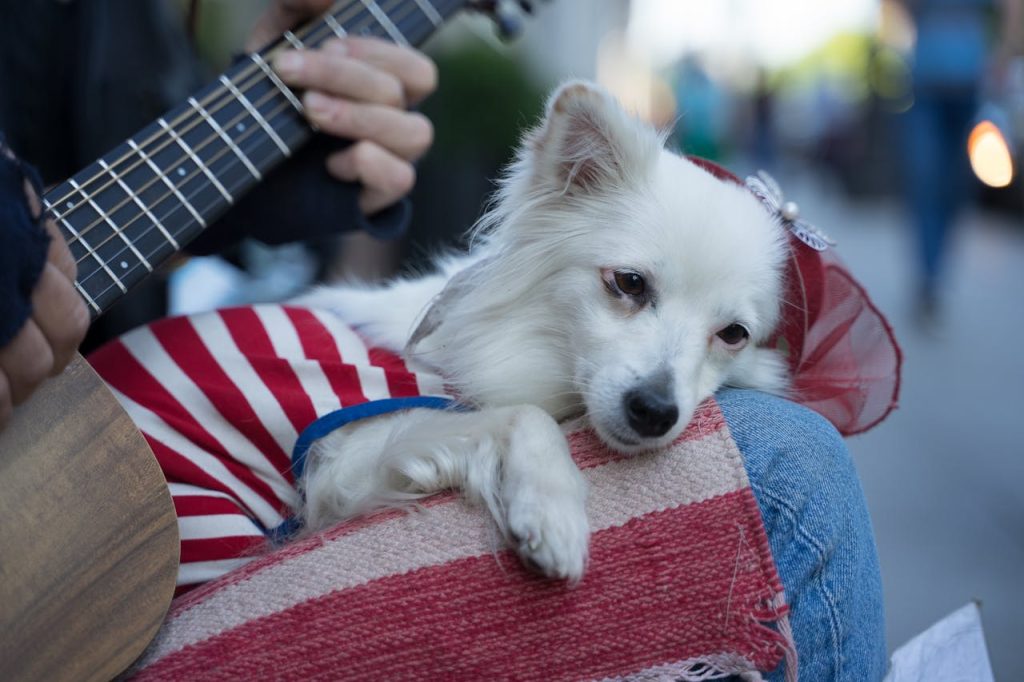
By focusing on rewards rather than punishment, you can create a positive association with desired behaviors, encouraging your dog to repeat them willingly.
This approach is essential when teaching your dog to stay home alone, as it helps build trust and reduces anxiety.
Clicker training is an effective method for achieving this, as it allows you to mark exact moments of desired behavior and immediately reward them with treats.
As you work with your dog, use treat rewards to reinforce calm, relaxed behavior. When your dog responds calmly to cues, such as ‘sit’ or ‘stay,’ reward them with a treat and praise.
This positive reinforcement will help your dog associate calm behavior with desirable outcomes.
By consistently using positive reinforcement techniques, you’ll help your dog develop the skills and confidence needed to stay home alone without experiencing distress.
With time and practice, your dog will learn to relax and enjoy their alone time, making it easier for you to leave the house without worrying about their well-being.
Gradually Increase Alone Time

As you continue training your dog, it’s important to help them become comfortable with being alone.
You’ll start by leaving the room for short periods, allowing your dog to gradually adjust to your absence.
Leave the Room

You’ll start by leaving the room for short periods while your dog is calm, then gradually increase the time you’re away.
This training method will help your dog learn that being alone doesn’t mean you’ve abandoned them.
- You’ll reduce the risk of developing separation anxiety.
- Your dog will feel more secure when left alone.
- They’ll be less likely to engage in destructive behaviors like chewing or digging.
- You’ll help your dog learn to calm themselves in stressful situations.
As you leave the room, your dog might whine, bark, or get anxious.
Don’t worry! This is normal. Just remember to ignore any attention-seeking behavior and reward calmness.
Increase the alone time based on your dog’s comfort level, and remember, every small step forward is a victory.
Stay patient and consistent, and you’ll be on the path to helping your dog become confident in staying home alone in no time.
Short Sessions First

Start with short sessions to help your dog get used to being alone, and then gradually increase the alone time as they become more confident and calm.
This approach is known as gradual desensitization, and it’s a powerful tool for helping your dog overcome separation anxiety.
By starting with short training sessions, you can help your dog learn to cope with being alone without feeling overwhelmed.
| Session Length | Goal | Tips |
|---|---|---|
| 5-10 minutes | Get your dog used to being alone in a room | Start with short sessions, and reward calm behavior |
| 15-30 minutes | Increase alone time, while still in the house | Gradually increase session length, and continue to reward calm behavior |
| 30-60 minutes | Increase alone time, while you’re outside the house | Make sure your dog has plenty of toys and treats to keep them occupied |
| 1-2 hours | Help your dog learn to relax while alone for extended periods | Be consistent, and remember to reward good behavior |
Monitor Progress Closely

By monitoring your dog’s progress closely, you can determine when it’s time to gradually increase alone time, striking a balance between challenging them to overcome separation anxiety and avoiding overwhelming situations.
This is where progress tracking comes in – observing your dog’s behavior, identifying patterns, and making adjustments to your training plan.
Through regular behavior assessments, you’ll gain insight into your dog’s comfort level with being left alone.
As you track your dog’s progress, consider the following:
- Are they showing signs of relaxation, such as a calm demeanor or decreased pacing?
- Are they able to focus on toys or treats when you’re away?
- Do they seem anxious or stressed when you leave the room?
- Are they having accidents or exhibiting destructive behavior?
Manage Separation Anxiety Symptoms
One of the most effective ways to manage separation anxiety symptoms in your dog is to begin by understanding and recognizing the signs of distress that occur when you prepare to leave the house.
You’ll want to identify your dog’s specific anxiety triggers, which can range from putting on your coat to grabbing your keys.
| Anxiety Trigger | Dog Behavior | How to Manage |
|---|---|---|
| Putting on your coat | Whining, panting | Desensitize your dog by wearing your coat around the house |
| Grabbing your keys | Pacing, barking | Gradually introduce your keys in a low-stress setting |
| Saying goodbye | Howling, destructive behavior | Develop a calm departure routine |
Frequently Asked Questions
You’re probably wondering if your dog will ever overcome separation anxiety; while it’s tough to completely cure it, applying consistent training techniques and recognizing early separation anxiety signs can greatly reduce its grip.
Take Sarah’s case, where her anxious pup, Max, found solace in TV’s calming sounds. You can try leaving a TV or radio on for your dog, too, as a noise distraction to aid in calm dog behavior.
You can safely leave your dog home alone for varying lengths of time, depending on their age, breed, and individual needs; puppies and high-energy breeds require more attention, while older dogs may tolerate longer periods alone.
As you ponder getting a second dog to keep your furry friend company, you’re fundamentally trying to ‘kill two birds with one stone’ – addressing dog companionship needs and potentially altering canine behavior.
You can try calming treats or anxiety supplements to help soothe your dog’s nerves, but always consult with a veterinarian before introducing new aids to guarantee they’re safe and effective for your furry friend.
Conclusion
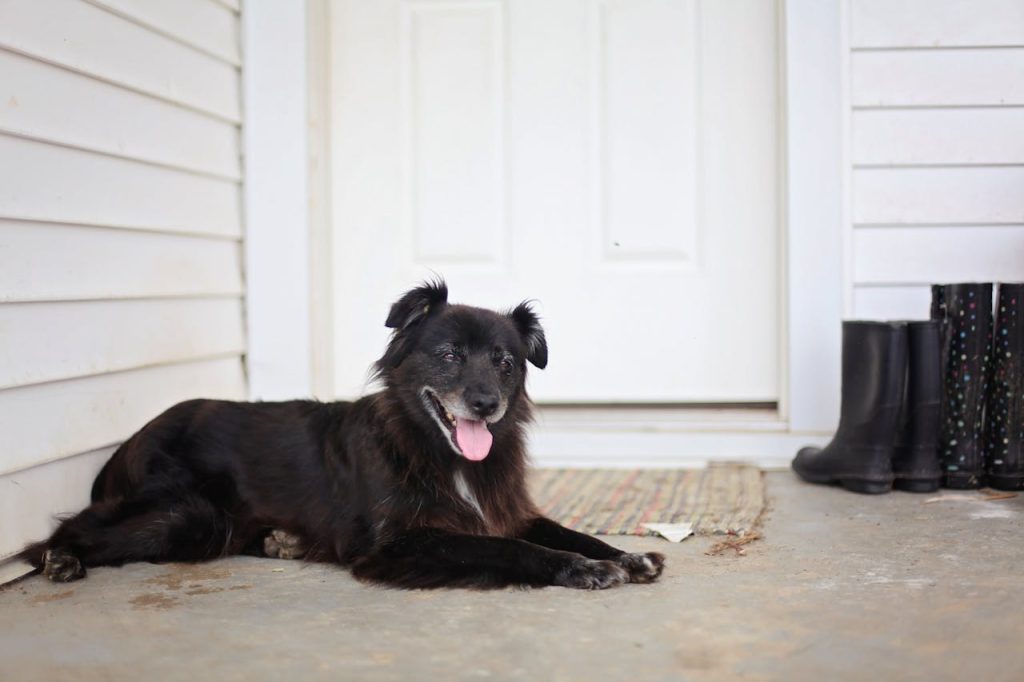
As you close the door behind you, the ache of separation may echo through your mind, but with these steps, you’ve empowered your dog to wear the badge of independence.
By incrementally building alone time, exercising before departures, and providing mental stimulation, you’ve transformed your home into a haven, not a prison.
Your dog will thank you for the peace of mind that comes with being home alone, and so will your guilt-free conscience.
